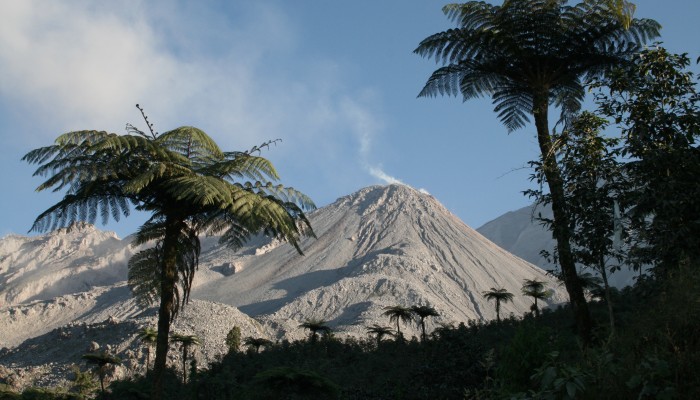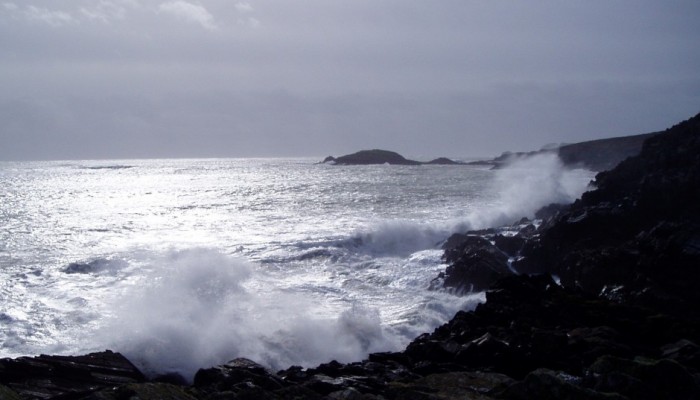Over a year and a half on from the Great Eastern Japan Tsunami, and there are still boats lying overturned at the side of roads. Recovering from such a major national catastrophe is a slow process. We hope to be able learn from this tragedy and use it to lower vulnerability to future disasters, both in Japan and around the world’s coastlines. The magnitude 9.0 earthquake on the 11th March 2011 was ...[Read More]
VolcanicDegassing
Santiaguito Volcano: Ninety Years and Counting.
Santiaguito volcano, Guatemala, burst into life in 1922 and is now the second longest continuing eruption. It has outlasted both Stromboli (Italy) and Sangay (Ecuador), both erupting since 1934, and is only outdone by Yasur (Vanuatu), which has been erupting at least since 1774, when first visited by Captain Cook. These long-lived eruptions give us an unusual opportunity to use the slowly-extruded ...[Read More]
Geology for Global Development
Going to This Year’s AGU Meeting?
The American Geophysical Union (AGU) convenes this week for their 45th annual fall meeting – the world’s largest international gathering of Earth scientists. Geoscientists from all around the world will be sharing their latest research and catching up with colleagues from other institutions. There will be plenty of talks relevant to GfGD. We’ve picked our highlights from the sche ...[Read More]
Green Tea and Velociraptors
Eat your greens, and you’ll grow up to be a big dinosaur
What comes to your mind when someone says ‘theropod dinosaurs’ to you? Does the mind conjour images of Tyrannosaurus rex noshing on lawyers, packs of voracious Deinonychus ambushing unsuspecting ornithopods, or perhaps you’re quite progressive and thought about flocks of birds migrating south for the winter. Sticking strictly to the Mesozoic (before 65.5 million years ago), most ...[Read More]
Geology for Global Development
Friday Photo (59): Active Geology – Icelandic Geyser
These two images show an Icelandic geyser when calm (top) and then when ‘erupting’ (Bottom). Historical reports associate increased activity in the geysers with earthquakes. (c) Geology for Global Development
GeoSphere
Guest Post – Things go up, things go down – Dr. Martin Wolstencroft
This post is the first of hopefully many guest posts by graduate students and geologists I work with. This post is by Dr. Martin Wolstencroft, a post doctoral fellow with Dr. Glenn Milne here at UOttawa. Martin is a geophysicist by trade and hails from a small town in central England. He did his undergraduate degree and PhD. at Cardiff University in Wales. His PhD. research focussed on the solid E ...[Read More]
GeoSphere
Geology Photo of the Week #13 – Nov 25-Dec 1
So the 13th photo of the week is this sweet as pic of boiling mud from New Zealand’s North Island. Both photos were taken by me in July of 2009. I had to stand at the ready for quite a while to try and get good pictures of the bubbles bursting and there were many failed attempts. On the whole I think I did pretty well. Hope you like them! By the way, stay tuned for some an awesome guest post ...[Read More]
Green Tea and Velociraptors
The crux of the matter – language, context, and narrative
Throughout this series, I have highlighted the pitfalls and issues associated with effective communication of scientific knowledge to and with the public. This has largely been fueled by a recent paper highlighting these points as stepping stones and hurdles which scientists face and can develop upon to create strategies for becoming better at public communication. However, I’ve yet to offer ...[Read More]
Geology for Global Development
Launch of Foresight Report: Reducing the Risk of Future Disasters.
Today the UK government released their highly anticipated foresight report into “Reducing the Risk of Future Disasters”. This report, led by the UK government’s chief scientific advisor, Sir John Beddington, looks at disasters in developing countries that have resulted from natural hazards. The aim has been ‘to provide advice to decision makers on how science can inform the ...[Read More]
Green Tea and Velociraptors
Story-telling rocks.
‘Story-telling’ is often quoted as a way of communicating scientific ideas to non-scientific audiences. It’s seen as a way of providing a form of narrative with which an audience can relate to, and thus provide a more engaging account of a scientific report. Admittedly, not everything can be transformed into a story of sorts, but there are many aspects of science, be it theoretical, model-based, o ...[Read More]


